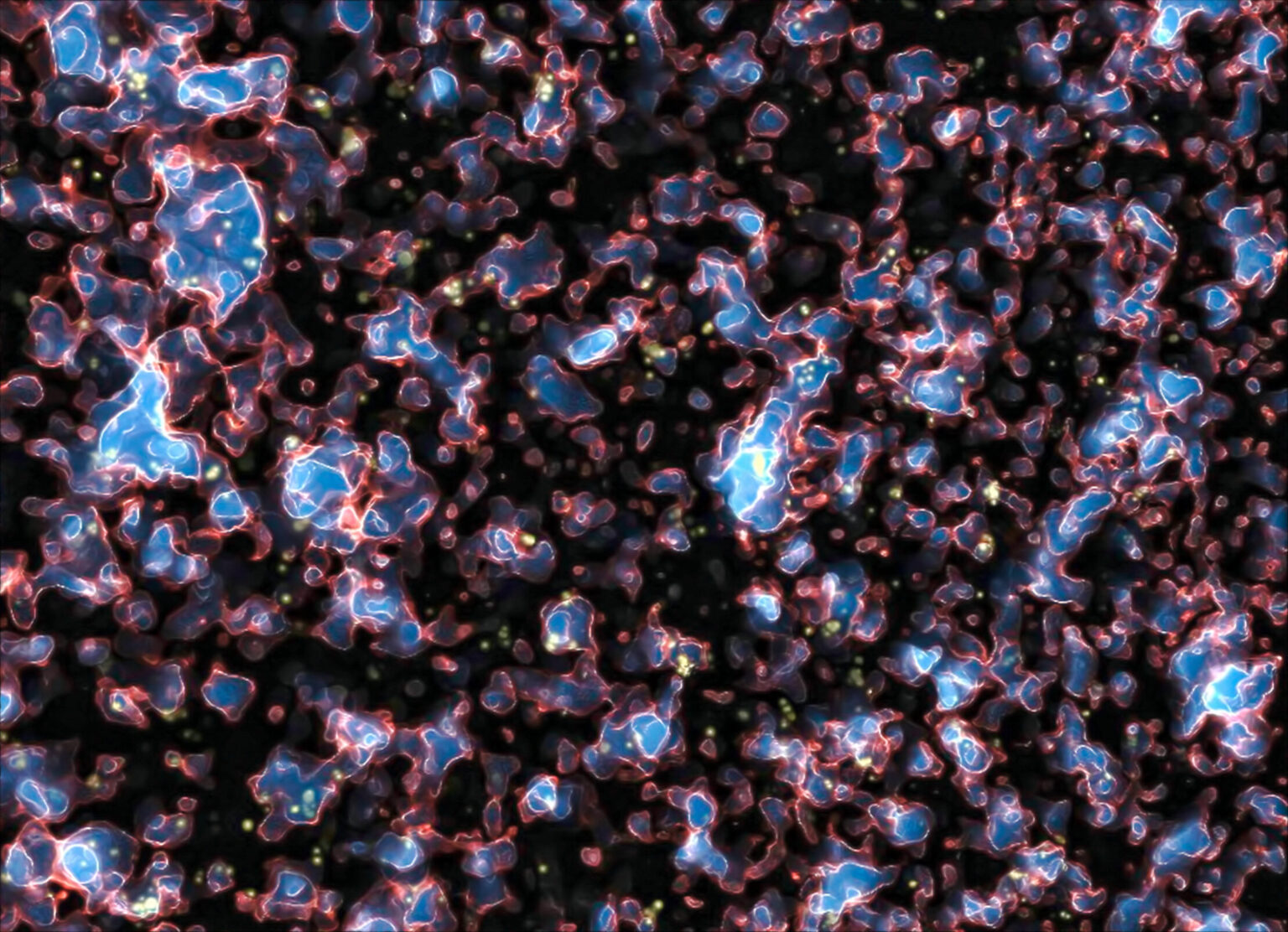The Epoch of Reionization is the period in the history of the Universe when the first stars lit up and neutral hydrogen dissipated, and space became transparent. New research from the James Webb Space Telescope suggests that scientists may be wrong about its end time.

Reionization in the early Universe
Reionization is the critical period when the first stars and galaxies changed the physical structure of their surroundings and then the entire Universe. According to settled theories, this epoch ended about 1 billion years after the Big Bang. However, if we calculate this milestone using observations from the James Webb Space Telescope, reionization would have ended at least 350 million years earlier than expected. This is according to a new paper published in the journal Monthly Notices of The Royal Astronomical Society: Letters.
During its history, the Universe has undergone several major changes. For the first 380,000 years after the Big Bang, it was a hot, dense plasma of protons and electrons. Eventually all cooled down enough that the protons and electrons were able to combine to form neutral hydrogen atoms. Then, about 100 million years after the Big Bang, the first stars and galaxies began to form, marking the beginning of the epoch of reionization.
These first stars were huge and hot, some predictions suggesting 30 to 300 times more massive than our Sun, and emitted a lot of energy in the form of extreme ultraviolet light. This energy was so intense that when it impacted neighboring hydrogen atoms, it split them into protons and electrons in a process called ionization. After hundreds of millions of years, when almost all the hydrogen in the Universe became ionized, the epoch of reionization ended.
Early reionization and changes in the Universe
Considering that approximately 75% of all matter is made up of hydrogen, this represents a huge transformation. “This is the last major change to happen,” explained Julian Muñoz, associate professor of astronomy at the University of Texas at Austin and lead author of the paper.
“The process heated and ionized gas in the universe, which regulated how fast galaxies grew and evolved,” added John Chisholm, associate professor of astronomy at the University of Texas at Austin and co-author of the paper. These early stars established the general structure of galaxies in the Universe.
Since astronomers cannot observe the reionization process directly, they need to use models to predict its end. These models are based on indirect evidence, including measuring the amount of light reaching us from the afterglow of the Big Bang, which is called the cosmic microwave background.
Another evidence is the early large number of waves associated with energetic changes in hydrogen, the so-called Lyman-alpha Forest. Both of these factors help astronomers calculate the amount of hydrogen that was transformed during reionization, and consequently the amount of energy required to do that.
“It’s an accounting game,” said Muñoz. “We know that all hydrogen was neutral before reionization. From there, you need enough extreme ultraviolet to split each atom. So, at the end of the day, you can do the math to figure out when reionization ended.”
James Webb telescope data contradicting models
The James Webb Space Telescope challenges established models. It can help astronomers look further into space than ever before, deep into this critical epoch. This leads to many unexpected observations in the early Universe, one of which is a larger number of galaxies with extreme ultraviolet emission than expected. “JWST has revealed that bright galaxies are enough to ionize the universe by themselves,” said Chisholm. “This is counter to what many people anticipated.”
Thus, accounting is off now with all these new observations. “If you were to trust James Webb blindly, it would tell you that reionization ended 550 million to 650 million years after the Big Bang, instead of current estimates of 1 billion years,” explained Muñoz. “If this were true, the Cosmic Microwave Background would look different, and the Lyman-alpha Forest would look different. So, there’s a tension.”
Mysteries of reionization
In other words, it is improbable that reionization occurred hundreds of millions of years earlier than expected. So what’s going on? One explanation may lie in the fact that established models lack some key information. For example, sometimes ionized protons and electrons come back together to form neutral hydrogen atoms again. This process is called recombination. If it occurred more frequently than current models suggest, it could increase the amount of extreme ultraviolet light needed to ionize the entire Universe.
“We need more detailed and deeper observations of galaxies, and a better understanding of the recombination process,” said Munoz. “Resolving this tension on reionization is a key step to finally understanding this pivotal period. I am excited to see what the coming years hold.”
According to phys.org


